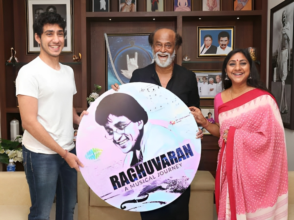How to Stand Out in a Video Interview: Strategies for Success
- 1 Understanding the Importance of Video Interviews
- 2 Preparing for the Video Interview
- 3 Mastering the Video Interview
- 3.1 Make a Strong First Impression
- 3.2 Communicate Clearly and Confidently
- 3.3 Maintain Eye Contact
- 3.4 Handle Technical Glitches Gracefully
- 3.5 Use Non-Verbal Communication Effectively
- 3.6 Ask Thoughtful Questions
- 4 Following Up After the Interview
- 5 Common Mistakes to Avoid in Video Interviews
- 5.1 Poor Lighting and Background
- 5.2 Technical Issues
- 5.3 Overlooking Non-Verbal Communication
- 5.4 Failing to Follow Up
- 6 Conclusion: Mastering the Art of Video Interviews
In today’s digital age, video interviews have become a common practice for employers to screen candidates efficiently. Whether you’re applying for a job across the globe or around the corner, there’s a good chance you’ll face a video interview at some point in your job search. While video interviews offer convenience, they also come with unique challenges that require careful preparation. This article will guide you through strategies to stand out in a video interview and maximize your chances of success.
Understanding the Importance of Video Interviews
Before diving into strategies, it’s essential to understand why video interviews have become so popular. The rise of remote work, globalization, and technological advancements have made video interviews preferred for employers. They save time and resources, allowing companies to interview candidates from different locations without the need for travel. Video interviews also offer employers a glimpse into how candidates handle technology, which is increasingly important in many jobs.
For candidates, video interviews offer the opportunity to demonstrate professionalism and adaptability. However, they also introduce new variables affecting your performance, such as technical glitches, background distractions, and difficulty building rapport through a screen. Understanding the significance of video interviews will help you approach them with the right mindset and preparation.
Preparing for the Video Interview

Test Your Technology
Technical issues can disrupt your video interview and leave a negative impression on the interviewer. To avoid this, make sure your technology is up to the task. Test your computer, webcam, microphone, and internet connection before the interview. Ensure your camera is positioned at eye level and the microphone captures your voice.
It’s also a good idea to test the video conferencing platform that will be used for the interview. Please familiarize yourself with its features, such as muting your microphone, sharing your screen, and adjusting the camera settings. If unsure about the platform, look for online tutorials or practice with a friend to build confidence.
Choose the Right Environment
Your environment is crucial in how you’re perceived during a video interview. Choose a quiet, well-lit room where you won’t be disturbed. Ensure the background is clean and free of distractions, as this helps maintain a professional appearance. Position yourself in front of a plain wall or a tidy, neutral background if possible.
Lighting is also essential. Natural light is ideal, but if that’s not available, use a desk lamp to illuminate your face without creating harsh shadows. Avoid sitting with your back to a window, as this can cause backlighting, making it difficult for the interviewer to see you.
Dress Professionally
Even though you’re interviewing from home, you must dress as you would for an in-person interview. Dressing professionally helps you look the part and boosts your confidence. Avoid overly bright or distracting patterns, as they can be off-putting on camera.
While it’s tempting to wear comfortable bottoms since they’ll likely be out of view, dressing in full professional attire helps put you in the right mindset for the interview. This also ensures you’re prepared to stand up for any reason during the interview.
Mastering the Video Interview

Make a Strong First Impression
First impressions are crucial in any interview, which is no different from video interviews. Start by greeting the interviewer with a warm smile and making eye contact through the camera. Introduce yourself confidently and thank the interviewer for the opportunity. This sets a positive tone for the rest of the conversation.
Maintaining good posture is also essential. Sit up straight and avoid slouching, as this conveys professionalism and attentiveness. Keep your hands visible, but avoid fidgeting, which can be distracting.
Communicate Clearly and Confidently
Clear communication is critical to a successful video interview. Speak slowly and clearly, and avoid rushing through your answers. It’s important to pause briefly after each question to gather your thoughts before responding. This helps you provide thoughtful answers and reduces the risk of talking over the interviewer.
When answering questions, be concise and stay on topic. Avoid rambling or going off on tangents, as this can make you appear unfocused. Use the STAR (Situation, Task, Action, Result) method to structure your responses, especially for behavioural interview questions. This approach helps you provide specific examples that demonstrate your skills and experience.
Maintain Eye Contact
Eye contact is essential to communication and can be challenging to maintain during a video interview. To create the illusion of eye contact, look directly into the camera when speaking rather than at the screen. This helps build a connection with the interviewer and shows that you are engaged.
It’s natural to glance at the screen occasionally, especially when the interviewer is speaking, but try to return your gaze to the camera when it’s your turn to talk. Practising this in advance can help you feel more comfortable during the interview.
Handle Technical Glitches Gracefully
Technical issues can arise during a video interview, but how you handle them can make a big difference in the interviewer’s perception of you. Stay calm and polite if you encounter a problem, such as a poor internet connection or a malfunctioning microphone. Apologize for the inconvenience and suggest a solution, such as reconnecting or switching to a phone call.
Being proactive and composed in the face of technical challenges demonstrates your problem-solving skills and ability to remain calm under pressure—qualities employers highly value.
Use Non-Verbal Communication Effectively
Non-verbal communication plays a significant role in how you are perceived during a video interview. In addition to maintaining eye contact, use facial expressions to convey enthusiasm and interest. You nod occasionally and smile when appropriate, showing engagement and attention.
Hand gestures can also be effective, but use them sparingly and naturally. Avoid excessive movements that might distract the interviewer. Remember, the goal is to appear calm, confident, and professional throughout the interview.
Ask Thoughtful Questions
This is your chance to show that you are genuinely interested in the role and the company. Prepare a few thoughtful questions in advance, focusing on topics such as company culture, team dynamics, or opportunities for growth and development.
Avoid asking questions that can be quickly answered through a quick search or focusing solely on salary and benefits. Instead, demonstrate that you’ve done your research and are eager to learn more about how you can contribute to the company’s success.
Following Up After the Interview

Send a Thank-You Email
Following up after a video interview is as important as the interview itself. Within 24 hours of the interview, send a thank-you email to the interviewer. In your email, express your appreciation for the opportunity to interview, reiterate your interest in the role, and briefly mention a specific topic or point from the interview that resonated with you.
This follow-up shows you are professional, courteous, and genuinely interested in the position. It also provides an opportunity to reinforce your qualifications and leave a positive, lasting impression.
Reflect on Your Performance
Consider what went well and identify any areas where you could improve. This self-assessment will help you prepare for future interviews and continue to refine your interview skills.
If you experienced any technical issues or felt that certain aspects of the interview could have gone better, think about how to address these challenges in the future. Whether improving your technology setup or practising your responses to common interview questions, continuous improvement is vital to interview success.
Be Patient and Stay Positive
Waiting to hear back after a video interview can be nerve-wracking, but remaining patient and enthusiastic is essential. The hiring process can take time, and there may be multiple rounds of interviews or other candidates being considered.
While you wait, continue your job search and prepare for other opportunities. This proactive approach keeps you busy and helps reduce the anxiety of waiting. Remember, every interview is a learning experience, and staying positive will keep you motivated and ready for the next opportunity.
Common Mistakes to Avoid in Video Interviews

Poor Lighting and Background
One of the most common mistakes candidates make in video interviews is neglecting their lighting and background. Poor lighting can make it difficult for the interviewer to see you clearly, while a cluttered or distracting background can take the focus away from your responses.
To avoid this mistake, ensure your face is well-lit, and your background is clean and professional. A simple, neutral background is ideal, as it keeps the focus on you and your qualifications.
Technical Issues
Technical issues, such as a weak internet connection, malfunctioning equipment, or unfamiliarity with the video conferencing platform, can disrupt the interview flow and create a negative impression.
To minimize the risk of technical issues, test your technology well in advance and have a backup plan. Familiarize yourself with the video conferencing platform and ensure your internet connection of Preparation
Failing to prepare for a video interview is a common mistake that can lead to poor performance. Without proper preparation, you may struggle to answer questions effectively, appear unprofessional, or miss opportunities to showcase your qualifications.
Preparation is critical to a successful video interview. Research the company, practice your responses to common interview questions, and ensure that your environment is conducive to a professional interview.
Overlooking Non-Verbal Communication
Non-verbal communication is just as important in a video interview as in an in-person interview. Failing to maintain eye contact, using distracting hand gestures, or displaying negative facial expressions can detract from your message and make you appear less engaged.
To avoid these pitfalls, practice maintaining eye contact with the camera, use natural hand gestures, and be mindful of your facial expressions. Positive non-verbal communication can help reinforce your verbal responses and leave a strong impression.
Failing to Follow Up
Some candidates neglect to follow up after a video interview, missing an opportunity to reinforce their interest in the role and leave a positive, lasting impression. A simple thank-you email can significantly affect how the interviewer perceives you.
Always follow up with a thank-you email within 24 hours of the interview. Express your appreciation, reiterate your interest in the role, and briefly highlight a key point from the interview that resonated with you.
Conclusion: Mastering the Art of Video Interviews
Standing out in a video interview requires preparation, technical proficiency, and effective communication. By understanding the importance of video interviews and following the strategies outlined in this article, you can confidently navigate the process and increase your chances of success.
Remember to research the company and role, test your technology, choose the right environment, and dress professionally. During the interview, make a solid first impression, communicate clearly, maintain eye contact, and use non-verbal communication effectively. After the interview, follow up with a thank-you email, reflect on your performance, and stay positive as you await a response. With these strategies in mind, you’ll be well-equipped to stand out in your following video interview and take the next step in your career journey.

















